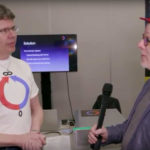In this video from Disruptive Technologies exhibit at SC17, Theodore Omtzigt describes the mission of a new Startup called Posit Research. “Posit Research is a fabless semi designing and marketing posit-based computational solutions for the artificial intelligence and high-performance computing markets. We are creating a new type of artificial intelligence supercomputer that adapts to the application. It uses a new number system called posit.”
Beating Floating Point at its own game: Posit Arithmetic
“Dr. Gustafson has recently finished writing a book, The End of Error: Unum Computing, that presents a new approach to computer arithmetic: the unum. The universal number, or unum format, encompasses all IEEE floating-point formats as well as fixed-point and exact integer arithmetic. This approach obtains more accurate answers than floating-point arithmetic yet uses fewer bits in many cases, saving memory, bandwidth, energy, and power.”
Radio Free HPC Looks at the Posit and Next Generation Computer Arithmetic
In this podcast, the Radio Free HPC team discusses a recent presentation by John Gustafson on Next Generation Computer Arithmetic. “A new data type called a “posit” is designed for direct drop-in replacement for IEEE Standard 754 floats. Unlike unum arithmetic, posits do not require interval-type mathematics or variable size operands, and they round if an answer is inexact, much the way floats do. However, they provide compelling advantages over floats, including simpler hardware implementation that scales from as few as two-bit operands to thousands of bits.”
John Gustafson presents: Beyond Floating Point – Next Generation Computer Arithmetic
“A new data type called a “posit” is designed for direct drop-in replacement for IEEE Standard 754 floats. Unlike unum arithmetic, posits do not require interval-type mathematics or variable size operands, and they round if an answer is inexact, much the way floats do. However, they provide compelling advantages over floats, including simpler hardware implementation that scales from as few as two-bit operands to thousands of bits. For any bit width, they have a larger dynamic range, higher accuracy, better closure under arithmetic operations, and simpler exception-handling.”






